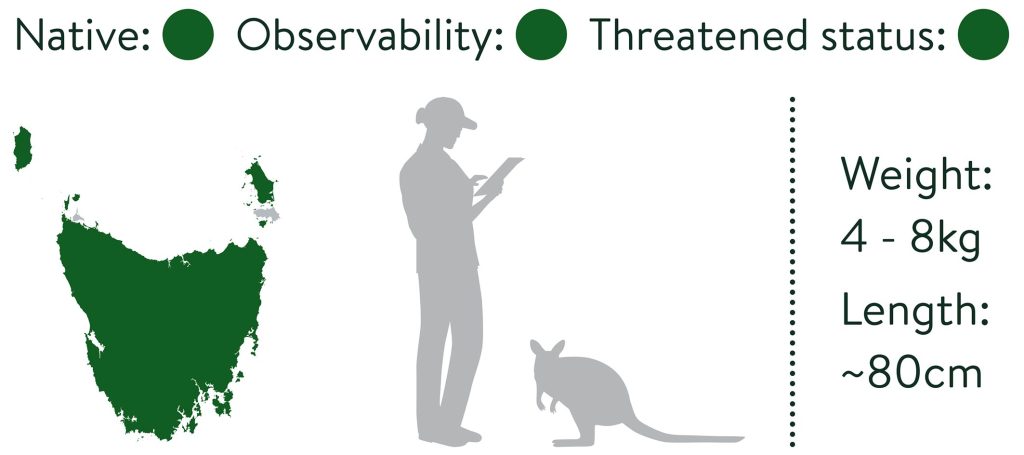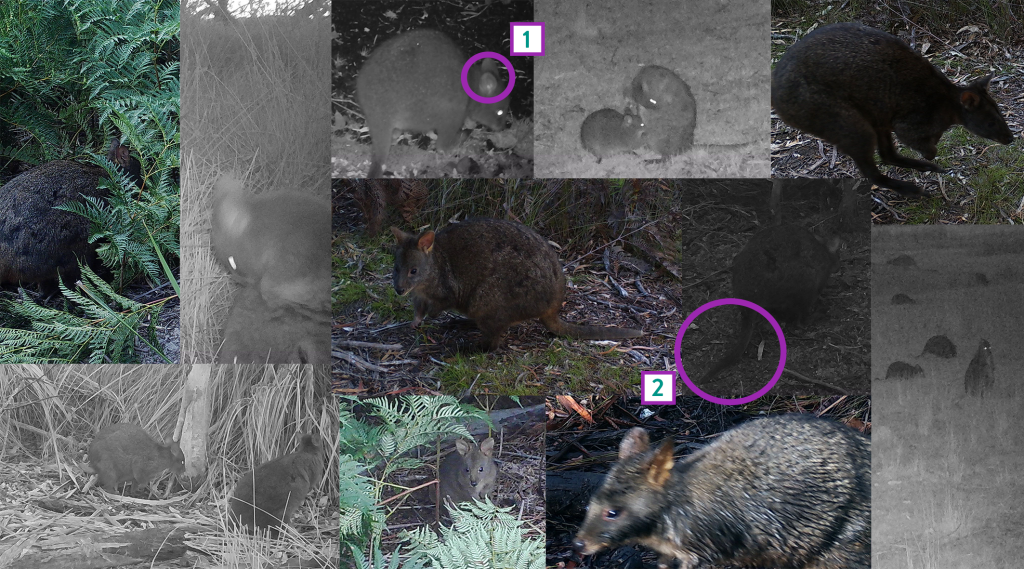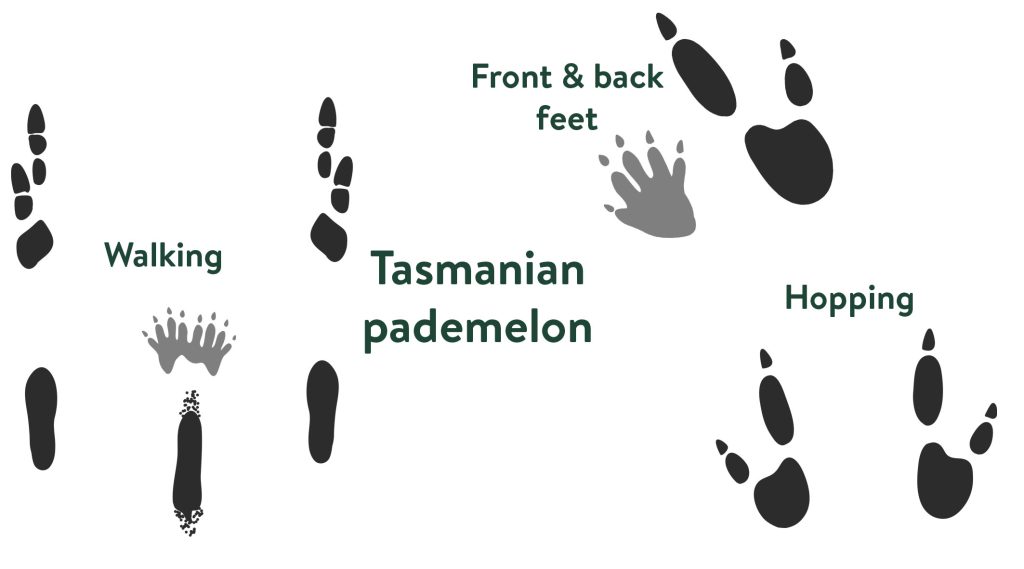Macropodidae | Thylogale billardierii
The pademelon is the most common macropod (big foot) to our state with a distinctive red-brown colouration, earning them the alternative name of ‘red-bellied pademelon’. The species was once widely distributed across south-eastern Australia but has been extinct on the mainland since at least the late 1800s. It is thought that Tasmanian pademelons truly are Tasmanian—they probably invaded Victoria back when sea levels were lower.

Lifestyle
Paddy’s are mostly nocturnal, seeking refuge among dense vegetation during the day and moving into more open environments come evening. They can often be seen foraging in groups, though aren’t known to have long-term bonds between individuals. Pademelons typically occur at much higher densities than other macropods (e.g., Bennett’s wallaby), especially along forest edges.
Like wallabies and kangaroos, male pademelons are larger than females tipping the scales at around nine kilograms while females average six kilograms. Their home ranges, spanning approximately 30 hectares, are roughly twice the size of females. On average, though, pademelons will maintain a one to three-hectare area of core use. Males engage in frequent skirmishes to establish and uphold dominance hierarchies. Of course, it is usually the winner who will initiate a fight and keep it going after momentary lulls in battle—encounters often captured on camera.
Pademelons breed year-round, with autumn being the most active season for births. A newborn pademelon weighs just 420 milligrams and must make an epic journey to its mum’s pouch where it will continue to develop for another seven months, becoming fully furred after around five months. Young at foot continue to suckle for a further three months until maternal pouch privileges are revoked.

Key identifying features
Small wallaby with round body, often in an arched posture. Dark brown to rufous (red) coloured coat, more uniform than for the Bennett’s wallaby. Ears are small and round (1). Tail shorter than the body length (2). Males are larger than females. Groups may forage in open environments, but individuals typically remain close to dense vegetation cover.
Similar species
Bennett’s wallaby – usually larger body size; not as round (or cute!); longer hind legs; tail is longer than body; coat colour is not uniform with a rufous band around the neck, dark paws and stripe down face.
Eastern bettong – body is not as round; paler coat colour; much more defined and lanky hindlegs; long tail usually with white tip; smaller rounded ears; shorter muzzle.
Habitats
Pademelons are easily found in a variety of environments, ranging from forests, including rainforests, to woodlands, shrublands, agricultural lands, parks, and gardens. Thriving in regions where open spaces for foraging are adjacent to dense vegetation, pademelons navigate between areas suitable for their daytime resting and nocturnal activities.
Diet
Pademelons are generalist browsers and primarily feed on grasses, shrubs, and broad-leafed forbs like variable plantain and dandelions.
Threats
Although not facing major threats, pademelons are vulnerable to predation from domestic cats and dogs and are frequently victims of road collisions. One feral cat was photographed killing and consuming an adult female pademelon that weighed around four kilograms! Pademelons are sometimes culled to reduce seedling damage in forestry plantations and grazing competition with livestock on farms. Historically, millions of pademelons were hunted for the international fur trade.

